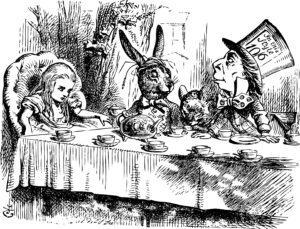As favorable vaccine news piles up, the winds of reflation are stirring. Early signs of an equity market style rotation in favor of cyclical value stocks, a weakening of the safe-haven US dollar, and a run-up in market-derived measures of inflation expectations all point to a resurgence of animal spirits despite a gloomy outlook for the economy. With our monetary maestros promising easy money into the distant future come what may, it is time to spare a thought for what the possible return of higher inflation might do to your portfolio. Inflation is viewed as the bane of fixed income investments, and rightfully so. But inflation can also wreak havoc on stocks. In theory, inflation should have no impact on equities provided companies are able to pass along higher input costs to their customers. In practice, equity valuations are highly sensitive to changes in the price level, tending to plummet when prices jump. No wonder investors are already casting about for inflation protection.
For a vociferous minority, the only bankable hedge for inflation is gold. For them, every spike in the gold price is reproof of government perfidy and foreshadows an inflationary surge. The evidence linking gold’s price and inflation, however, is curiously threadbare. If gold is an unreliable hedge against rising prices, what role, if any, should it play in a portfolio?

Gold as Currency
Gold, having shed its function as a means of exchange and unit of account, is still used as a store of value. Its inflation-hedging bona fides spring from the notion that, unlike other stores of value, it cannot be debased. Central bankers have the power to conjure fiat money at the stroke of a keyboard, but they are powerless when it comes to the quantity of gold. The price of gold may vary from day to day, but with a fixed supply on the order of 250,000 tons, of which one fifth remains lodged in the earth’s crust waiting to be mined, scarcity ensures that over long time spans its purchasing power remains intact. In 1934 an ounce of gold would have set you back US$26; had you buried it in the ground only to dig it up today, 86 years later, it would be worth almost US$2,000. Not a bad return when you consider that a paper dollar lost approximately 99% of its purchasing power in the interim.
But, of course, this simple illustration is dreadfully misleading. It is true that, had you let slip a dollar bill down the back of the couch while resting after burying your gold some 86 years ago, that dollar bill would buy you far fewer goods at the cash register today. Most dollars, however, are not left lying around to gather dust; they are deposited for safekeeping and, until recently, they earned interest. Fairer would be to evaluate gold relative to what you would have earned holding cash on deposit. According to Barro and Misra1, the long-term compounded return on cash (T-Bills), after accounting for inflation, has been 1% per year, just shy of gold’s 1.1% real return. Gold may have won by a nose, but that extra 10 basis points came at the expense of frequent eye-watering price fluctuations and the occasional sleepless decade.
Echoes of the Gold Standard
It turns out that gold’s reputation as an inflation hedge is really founded on just two episodes: the end of the gold standard and the oil shock of 1979. Between 1971 and 1975 the price of gold quadrupled as the US severed the official link between the US dollar and gold. Again between 1977 and 1980 the price of gold tripled as the inflationary impact of the second oil shock rippled through the entire energy-dependent supply chain. Outside of these two peculiar instances, the relationship between gold and inflation largely falls apart. Remove just the years of 1974, 1979, and 1980, and as we can see the positive correlation between inflation and gold disappears entirely.
Figure 1: Correlation between change in Gold price vs. Inflation 1971-2020
If inflation isn’t driving the gold price, what is? The evidence suggests that a big part of what’s moving gold prices are real interest rates—or the difference between 10-year treasury yields and inflation—whose movements up or down are an important indicator of the underlying state of an economy and its expected growth. This inverse relationship between gold and real rates is born out in the next figure, which shows yearly changes in the price of gold and real interest rates from 1971 to 2020. The large increases in the gold price in 1974, 1979, and 1980, in addition to the price spikes of 2011 and 2020, all occurred against a backdrop of negative real rates. Correspondingly, the gold price declines of the early ’80s coincided with soaring real rates, a consequence of the tight monetary policy enacted during Paul Volker’s chairmanship of the US Federal Reserve.
This relationship between real rates and gold echoes the historical linkages between gold and the US dollar. Under a gold standard, because currency values in terms of gold were fixed, trade imbalances between countries were routinely resolved by a physical flow of gold. Gold would flow into countries that exported more than they imported and had high real exchange and interest rates, and out of countries where the opposite conditions held. But under a fiat system, where currency values in terms of gold are no longer fixed, real interest rates continue to exercise their pull, except now rebalancing occurs with a change in the price of gold instead of a flow. Perhaps because of its ongoing role as a central bank reserve asset and store of value, gold behaves like a shadow currency. A currency where, absent the prospect of a future cashflow, assessing how much to own comes down to what else you could be doing with that fraying dollar bill.
Hedging Inflation: It Depends
Just because gold has kept pace with the price of goods and services does not make it an effective inflation hedge in every scenario. And that’s because the alternate sources of expected inflation—diminished supply versus excess demand—have drastically different implications for real rates and hence for hedging strategies. If you think the world is in the thick of a deflationary or stagflationary bust that will depress real interest rates, then by all means buy gold. The current pandemic, like natural disasters more broadly, can certainly fit the pattern and to the extent it continues to depress consumption could still prove to be one of those kinds of periods. But if you are concerned about monetary excess, adding gold to a portfolio may turn out to be futile and may even magnify risks. If central bankers succeed in reviving inflation by stimulating demand growth, then we should also expect real rates to increase and the gold price to weaken. In that scenario, to hedge inflation you are better off buying TIPS and selling conventional bonds.
It’s only fair to point out that any notional horse race between gold and other assets assumes a functioning financial system nested in a stable society—not an unreasonable assumption for an optimist. But you don’t have to peer too far back in history to find examples of conflict, dispossession and collapse. Beyond keeping up with the price level, part of gold’s appeal lies in its tantalizing potential to ward off financial devastation. Although, if society deteriorates and its ability to function looks dicey, the risk of confiscation also shoots up and your chances of avoiding devastation by holding onto your lump of gold decline precipitously. This makes gold a bit like owning an out-of-the-money put option on social collapse underwritten by an ultimately insolvent counterparty. There is no chance of collecting, but at least its value should rise when people are fearful.
Endnotes
1Robert Basra and Sanjay Misra, National Bureau of Economic Research, “Gold Returns,” NBER Working Paper Series (February 2013).
What did you think of this piece?









